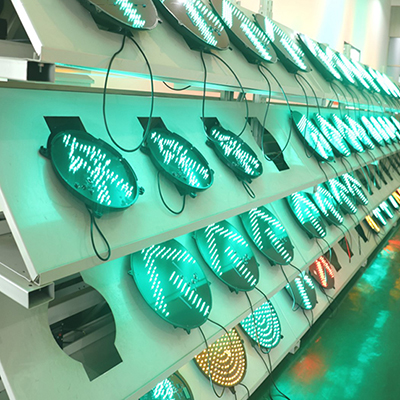Traffic management is an important aspect of urban planning, ensuring the smooth flow of vehicles, pedestrians, and cyclists on the roads. In order to regulate traffic effectively, one of the key tools used is traffic lights. Among various types of traffic signals, 4 phase traffic signal systems play a vital role in managing intersections and controlling traffic in dynamic urban environments. In this blog, we will delve into the intricacies of 4 phase traffic signals and understand the concept of phase in traffic signal systems.
1. What is a traffic light?
Before we get into the details of 4 phase traffic lights, let’s lay a solid foundation by first understanding the basic concepts of traffic lights. Traffic lights are devices installed at intersections to regulate the right of way for different traffic flows. They communicate through visual indicators such as red, amber, and green lights to ensure the safe and efficient movement of vehicles, pedestrians, and cyclists.
2. Understand the phase of traffic signals:
In traffic signal systems, a “phase” refers to a specific period of time during which traffic flows along a specific path or direction. Each intersection typically has multiple stages, allowing various movements to occur at different times. Effective coordination of these phases ensures a smooth flow of traffic and minimizes congestion.
3. Introduction to 4 phase traffic signals:
The 4 phase traffic signal system is a widely adopted design that provides four different time intervals for different movements at an intersection. These campaigns include the following stages:
A. Green stage:
During the green phase, vehicles traveling along a specific path or direction are granted the right of way. This allows traffic to move in a coordinated manner without conflicting with vehicles in other directions.
B. Yellow phase:
The yellow phase serves as a transitional period, indicating to the driver that the current phase is coming to an end. Drivers are advised to be prepared to stop as the light will turn red quickly.
C. Red phase:
During the red phase, vehicles coming from a specific direction must come to a complete stop to allow safe travel in other directions.
D. Full red phase:
The all-red phase is a brief interval where all lights at an intersection turn red to safely clear any remaining vehicles or pedestrians before the next phase begins.
4. Advantages of 4 phase traffic signal system:
Implementing a 4 phase traffic signal system provides many benefits, including:
A. Enhanced traffic flow:
By providing different time intervals for different movements, 4 phase traffic signals optimize traffic flow, reduce congestion, and minimize delays.
B. Improve security:
Effective coordination of the phases in a 4 phase traffic signal system improves intersection safety by minimizing conflicts between vehicles and different traffic flows.
C. Pedestrian friendly design:
The 4 phase traffic signal system considers pedestrian safety and convenience by incorporating dedicated pedestrian phases to ensure safe crossing opportunities.
D. Adapt to different traffic volumes:
The flexibility of 4 phase traffic lights allows adjustment to varying traffic volumes at different times of the day, ensuring efficient traffic management at all times.
In conclusion
In summary, 4 phase traffic signal systems play a vital role in regulating traffic at intersections and ensuring the smooth flow of vehicles, pedestrians, and cyclists. Understanding the concept of phases in traffic signals is crucial to understanding the effective coordination of traffic movements. By employing 4 phase traffic signals, city planners can optimize traffic flow, enhance safety, and promote a harmonious transportation system in urban environments.
Post time: Oct-31-2023







